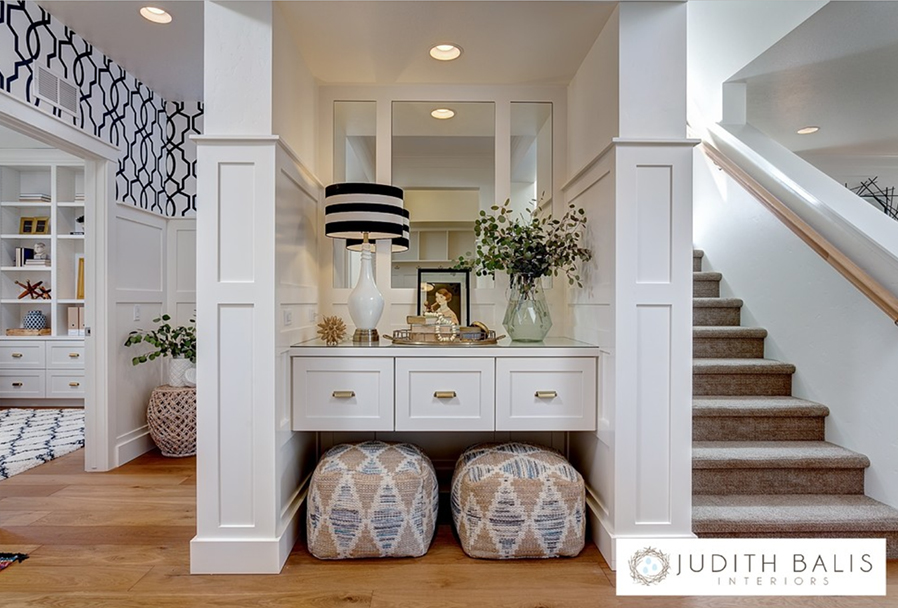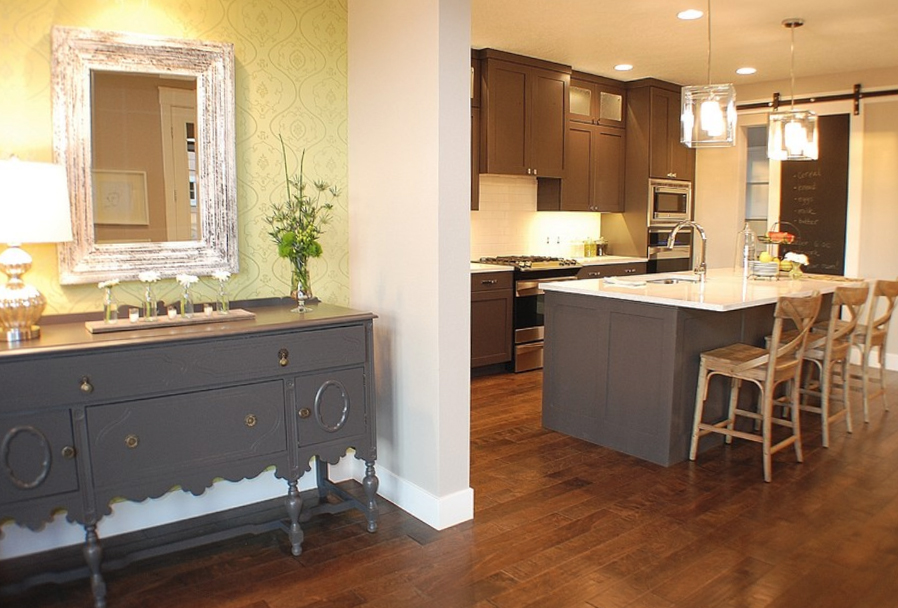Engineered vs. Non-Engineered Hardwood

(Here is an example of a beautiful, wide plank, white oak, engineered floor:)
Homeowners have two styles of hardwood flooring to choose from: engineered or non-engineered, which is also known as solid. The difference is that a solid floor is made from solid planks or tiles of a single species of wood, usually about 3/4 of an inch thick.
Engineered flooring is made of three to five layers of plywood or wood fiber and stone dust pressure glued together and topped with a veneer of high-quality wood. They can come in thicknesses of 5/16, 3/4, 3/8 or 1/2 inch. High quality engineered wood has a relatively thick top layer.
But are there any advantages or disadvantage to either? Indeed there are, including:
Price
One difference between engineered and solid hardwood flooring is price. Some experts claim that engineered wood is usually but not always less expensive than non-engineered wood, and the installation is usually easier. However, there are experts who claim that solid hardwood flooring is actually cheaper because more of it is sold, and it’s often sold at a discount.
So in short, if you know where to look you can usually find either solid or engineered hardwood at an affordable price.
Durability
The layers of plywood in an engineered plank are laid perpendicularly to each other, which gives the plank great strength and stability. Because of this, engineered wood flooring bears up better under heat and humidity than solid wood and can be installed in the basement, kitchen or bath. It is also preferred for installation over radiant heating, though solid hardwood can be installed above radiant heating if it’s quarter sawn.
Manufacturers recommend that solid wood flooring not be installed in the basement or in any other room where there’s high humidity. They also stress that wide planks of solid wood flooring be firmly nailed or glued to the subfloor to minimize movement.
Installation
Solid hardwood flooring must be fixed with nails, staples or glue to a subfloor made of wood, a wood product or oriented strand board. The installer leaves a tiny gap between the planks and the wall to allow for movement when the humidity levels in the room are high.
Engineered wood can be laid on vinyl or tile and on concrete as long as the humidity is not extremely high. It too can be glued or nailed to a subfloor, but the planks can also be nailed to each other and allowed to “float” above it.
Refinishing
One benefit that solid flooring has over engineered flooring is it can be sanded then refinished many more times than engineered flooring. Repairing it is also easier. A solid hardwood floor can be refinished as many as 10 times, while the engineered wood flooring can only be refinished once or twice.
Some low quality engineered floors can’t be sanded or refinished at all. Neither can floating floors, no matter their quality, for they’re not stable enough to get a good finish.
Sanding and refinishing removes the scratches, dings and dullness of an old floor and allows fresh coats of sealant to be added make it look new. The ability to refinish the floor several times is important if the family has small children and pets and has no plans for selling the home in the near future.
It’s also easier to find pieces of solid hardwood to match a floor that already exists. For example, if a wall of the house is taken out and reveals a gap in the floor, a plank or strip of matching solid hardwood is easier to find than that of engineered hardwood.
Looks
Flooring experts claim that solid wood floors generally look better than engineered wood flooring. Because of this, a well-maintained solid hardwood floor adds to the resale value of a house.
Though engineered hardwood flooring is made of real wood, if it’s not installed correctly, or if the floor is not level, it looks fake to some people. A floating floor can bounce in a way that people dislike. But engineered wood flooring’s stability allows wider planks to be installed, and some homeowners find wider planks attractive.
Height
Because engineered wood flooring doesn’t need to be installed on plywood, it is a good choice if the homeowner doesn’t want to add too much height to the floor. A floor that’s too high can impede doors opening and closing and make kitchen and bathroom floor cabinets uncomfortably high.
Whether to install a solid or engineered hardwood floor is up to the homeowner and their budget. As can be seen, both have their strengths and weaknesses. But as both are made of real hardwood, both a solid and engineered hardwood floor can be beautiful and durable additions to a house.
Jessica Kane is a writer for OSHA Campus Online, where you can complete a variety of OSHA training courses 100% online at your convenience.


Recent Comments